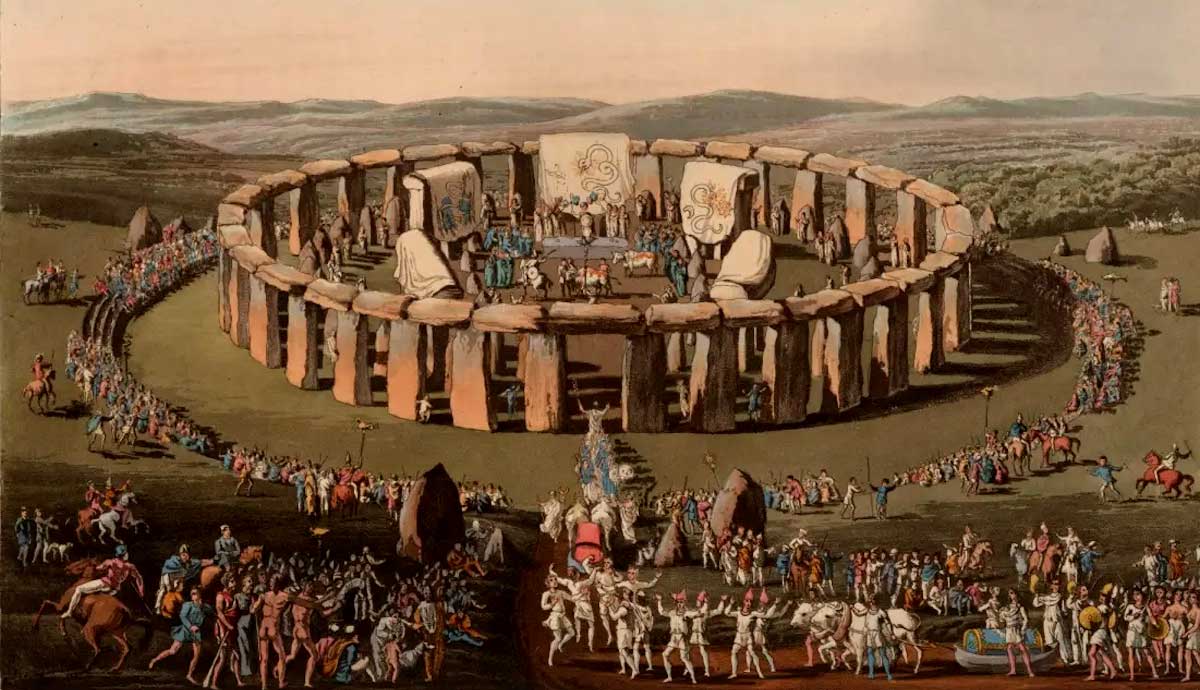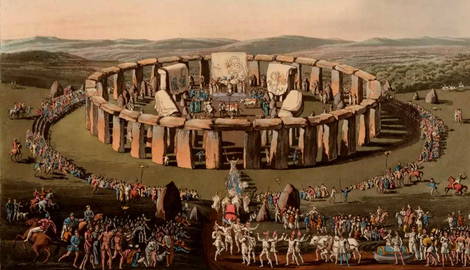
When considering the peoples of Iron Age Europe, the term that usually springs to mind is the word “Celt.” For many years, scholars used this term to categorize a group of people who inhabited a wide swathe of Europe from Spain to Britain, and France to Transylvania. In recent years however, studies have investigated the origins of the term “Celt” to question whether its use is an oversimplification of a wide range of unique peoples who all existed in Europe during the Iron Age.
The Origin of the Word “Celt”

The first mention of the word “Celt” comes from the ancient Greek, “Keltoi.” Hecataeus of Miletus was a Greek geographer who used the term to describe a group of people living near Massalia (modern-day Marseille in France). After this, the Greek geographer and historian Herodotus also used the term Keltoi to refer to a group of people living near the Danube and talk about those living in the far west in Europe.
It was not, however, until the Romans that detailed writings emerged regarding the Celtae, after a group of Gauls led by Brennus, reached and sacked Rome itself in 390 BCE. This event helped contribute to the widespread use of the term “Celt” to refer to the tribes north of Italy and Gaul (modern-day France).
La Tene and the Art of the Celts

One of the reasons that historians used the term “Celt” to refer to a wide range of people was the similarities in their artistic styles. During excavations in Switzerland in the 19th century, an assemblage of metalwork was discovered at Lake Neuchâtel. This style of art took the name of the nearby village, becoming known as “La Tene” art. Following on from this, many similar objects were discovered in other areas of Europe including Britain with examples coming from depositions in the river Thames such as at Battersea and Wandsworth. The examples from Britain however, often contain unique stylistic designs which could imply a difference between British craftspeople and those who were making similar objects on the continent.
One of the main characteristics of La Tene art is the intricate, almost hypnotizing swirling lines that weave and interlace around various pieces. Abstract human and faunal figures also decorate weapons, jewelry, cooking vessels, and other metal objects. One example of this form comes from the impressive Gundestrup cauldron which was found in Denmark and dates to around the first century BCE. The artistic motifs that decorate it suggest that it was made in the Balkans and possibly arrived in Denmark through the exchange of gifts and trade.
Celtic Languages

The similarities between languages across different regions of Europe is often cited as direct evidence of wider Celtic homogeneity. Similar Celtic languages can be found in Scotland, Wales, Ireland, Cornwall, the Isle of Man, and Brittany where there has been a continuation of native speakers or, in some cases, a linguistic revival. These languages all derive from the mutually intelligible languages spoken in Europe during the Iron Age which has been used as an indicator to suggest the link between various peoples who have all been labeled as Celts.
Apart from Irish and Welsh, the surviving Celtic languages are considered to be at risk due to the external pressures of English and French. Despite this, there is a wealth of knowledge preserved in oral traditions as well as literary recordings. There is, however, still a huge amount of literature deriving from these folk traditions that is yet to be studied and translated, meaning that this is still a very active field of research for scholars.
The Celts in the Modern Day

The term “Celt” was originally used as a way to differentiate a certain group of people from the Greeks and the Romans yet in the modern day, it has become almost a badge of honor for people around the world who trace their heritage back to the so-called Celtic regions of Britain and France. Furthermore, it is a word that people identify with as an umbrella term for the music, language, art, and traditions that continue to offer a sense of difference and ancient heritage.
Many traditions still exist in these regions and the use of language ties modern people to their heritage. The word “Celtic” for people who come from these regions such as those in Britain, is often used to acknowledge a difference in culture between themselves and the modern-day English, who derived a considerable amount of their culture, language, and genetics from the various Germanic and Scandinavian incursions. This began after the withdrawal of the Roman Empire from Britannia in the 5th century and the following waves of migration from the Angles, Saxons, Jutes, and Frisians from the Netherlands, Germany, and Denmark. This was then followed by the Scandinavian incursions during the Viking period at the end of the 8th century. It is this acknowledgment of the various genetic and ethnic origins of the modern-day British that has continued to fuel the debates between Celtic and Germanic origins.
The Celts in Britannia

When considering historical sources regarding the use of the term “Celt,” it is important to note that no sources quoted the inhabitants of Britain during the Iron Age as being Celts. Romans such as Caesar, Tacitus, and Strabo however, noted a similar language and culture in comparison to that of Gaul.
Cutting-edge DNA analysis of the peoples of Britain has also contributed significantly to the debate about the Celtic origins of the Britons. The latest research suggests that in Britain, there was no single “Celtic” genetic group and that the Cornish, for example, are genetically closer to the DNA of other English groups than to the Welsh or the Scottish. The evidence from DNA analysis also shows a migration of people into Britain after the last Ice Age but before the Roman period. This most likely suggests that the Iron Age population of Britain was generally established before the Iron Age, leading to genetic differences between Britons and the rest of the Celtic areas in Europe. This is supported by a large genetic study that highlighted a significant migration into Britain during the Bronze Age, yet before the Iron Age as previously thought by historians based on Roman writings. Furthermore, there is no archaeological evidence of a large-scale invasion of Britain in the Iron Age before the Romans arrived.

Another difference between the British population and those on the continent was their differing forms of architecture. In Britain, the dominant form of dwelling was the roundhouse which had existed since at least the Bronze Age, suggesting a continuity of practice. In contrast, the dominant form of domestic dwelling on the continent was rectangular in shape in a continuation of a practice potentially derived from the Neolithic period.
Final Thoughts on the Celts

So, were there ever any Celts in Britain during the Iron Age? When considering the linguistic, archaeological, and genetic evidence, it would appear that there is still some confusion; the speaking of a similar language and the creation of similar artistic styles do not necessarily indicate kinship with another region. This, however, all depends on how you define a “Celt.”
Archaeological and genetic evidence would suggest that there is a similar, ancient ancestry although a division had been created between the inhabitants of Britain and those of Gaul before the Iron Age. It is therefore incorrect to label the Britons as Celts. On the other hand, this raises many contemporary issues about the definitions surrounding race and ethnicity, especially seeing as we have no true record of what these people referred to themselves as.
It would seem prudent for the moment to consider that genetically, the Britons were different from the Celts in Europe, however, a similar language, artistic style, and culture indicate very close ties and a definitive mixing of people and ideas rather than a replacement of one population by another.










